
 |
|
MKR-fearless media mogul
By Wajid Shamsul Hasan |
Mir Khalil-ur-Rahman: A beacon of journalism
By Abida Gohar |
|
Quintessence of excellence
By Zeeshan Haider |
A hero, a legend and a man of his word
By Zeeshan Haider |
|
A page from history
|
An iconic figure in the field of journalism
|
|
Legends never die
|
A newsman par excellence
By Zaib Azkaar Hussain |
| MKR-fearless media mogul By Wajid Shamsul Hasan |
|
|
Top |
| Mir Khalil-ur-Rahman: A beacon of journalism By Abida Gohar |
|
Later on as his newspaper further grew, he adopted new techniques. During his visits to
foreign countries he would always keenly observe modern operational technology to familiarise his people
about it and also tried to make them use that technology. No wonder then that Mir Sahib pioneered the
introduc- tion of new technology in journalism. In the Urdu journalistic world the Jang Group was the
first in Pakistan to switch over to the com- puterised typesetting with the Noori Nastaliq style of
calligraphy as its base. 
Mir Sahib was sure that without the involvement of the employees and their great efforts, no
organisation could do well. He cre- ated a team by picking up good, sincere and hard working people and
under his guidance all of them worked brilliantly and became excellent correspondents, reporters, and
edi- tors. Mir Sahib always kept his professional and personal life apart, and gave immense impor-
tance to his people, country, readers and their interests. Limited resources and unlimited hurdles could
not deviate Mir Khalil-ur- Rahman from his mission to make journalism grow.
Apart from all of his struggles for the field
of journalism, he also played an instrumental role in the formation of the Council of Pakistan Newspaper
Editors (CPNE) and the APNS (All Pakistan Newspapers Society) for his fellow journalists.
The contents of the mysterious envelope drowned me in a pool of sweat. I rushed to Mir
Sahib. When he read them he too was not a happy man. Years before the fall of Dhaka, he would repeatedly
plead to the people who mattered to "read the writing on the wall". Obviously the mysterious envelope
was loaded with ominous tidings -- much similar to his apprehensions. On a visit to Dhaka in 1968 we had
seen together the signs of impending catastrophe. It was no joke when a senior Bengali editor in my
presence told MKR "next time when you will come here, you will have to have a visa". Smelling gun powder
and a rat, Mir Sahib called
-The author is former High Commissioner for Pakistan to UK and a veteran journalist. He
had also been an advisor to former Prime Minister Benazir Bhutto |
Top |
After independence, Mir Sahib shifted from Delhi to Karachi where he yet again went through the rigours of bringing out Jang. Here too he began from scratch. The government of Pakistan at that time also offered him some monetary help in run- ning his newspaper. But Mir Sahib, however, politely declined the offer saying that free- dom of the press was his motto and goal for the fourth pillar of the State in Pakistan. He also worked for the establishment of the Council of Pakistan Newspaper Editors (CPNE) which works for press freedom and for the right to information. Later when his newspaper became highly renowned he ordered the latest printing machines which were then used by world class publishers such as the New York Times. He did various other things for the development of his newspaper. Mir Sahib did all of this because he was a farsighted person and intended to raise the stature of his newspaper to the level where it compet- ed with the best newspapers of the devel- oped world. The passion for innovation and development led him to bring the colour printers to the subcontinent, the first news- paper owner to do so in the subcontinent. The printers he ordered would print hun- dreds of copies in a minute. The machinery used at that time in Great Britain looked so outdated as compared with the machinery that Mir Sahib had installed in his press. 
"Charity begins at home", is an adage which is hardly followed by entrepreneurs. Mir Sahib was again an exception. Despite being the owner of his newspaper, he always kept himself abreast of the general well being of his employees. And whenever he saw any of his employee/s or the person/s associated in any capacity with his newspaper, in a difficult situation, he extended a helping hand towards them. Mir Sahib had borne the marriage expenses of one of his loyal hawkers and supported many poor families. While considering the financial constraints of his employees, he gave employees bonuses even before the enforcement of the first Wage Board Award. These benefits and incentives were better than the ones which were offered in the first Wage Board Award. According to those who worked under his supervision, Mir Sahib always a p p r e c i a t e d their sincere efforts for the promotion of the newspaper. "He was an example for all the bosses out there, and still remains so", says one of the employees. |
Top |
"A nation that forgets its heroes will itself soon be forgotten," these are the words of one of the American presidents, Calvin Coolidge. Hardly any- one disagrees with this assertion. Nations praise their heroes for their sacrifices. Protectors of democracy, voice of the voiceless and social activists are some of the terms used to describe a journalist. Their importance lies in their being a bridge between the rulers and the ruled. For a common man to receive the truth they deserve, the bridge must be strong. Mir Khalil-urRahman was the foundation of this Vying to be on the top is a normal desire but this never stopped journalists from spreading the truth to every nook and cranny. It is not only the Jang Group that boasts about Mir Khalil-ur-Rahman but every person who realises and understands his sacrifices for the field of journalism has nothing but admiration for the fruit of the truth grown from the seed sown by Mir Khalil-urRahman. 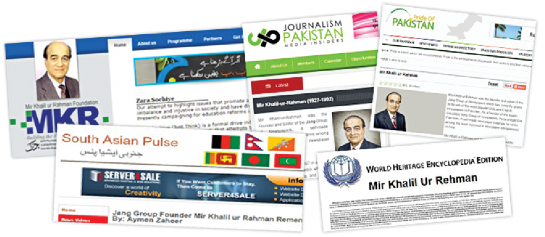
"A place where the world goes to explore" is the tagline on a website of worldheritage.org, which accumulates various articles, artwork, journals and ebooks for students and teachers alike. It too remembers Mir Khalil-ur-Rahman and discusses his life, career and even his family members. The information though accumulated from various articles published by Jang and The News still pictures Mir Khalil-ur-Rahman's personality and the willingness in people to accept his diversity and acknowledging him for his sacrifices. Not only world heritage, but also a website called self.gutenburgh.org which works in almost the same manner as world heritage, publishes the same information regarding Mir Khalil-ur-Rahman. Mir Khalil-ur-Rahman did not consider his duty to be only limited to spreading the truth but also worked for cultivating the new generation by various means since a very young age. To support him with his noble cause he had his group of associates. Knowledge has a beginning but no end, maybe Mir Sahib was a follower of this belief as well and considered book reading to be its foundation. For this sole purpose he started a book reading club, "Anjuman-e-Jang Kitab Ghar" with Jamiluddin Aali and Ibn-e-Insha for young minds to inculcate a reading habit. "Action speaks louder than words" and Mir Sahib was a man of action. The things he did for the nation, youth, democracy and for the press corps, regardless whether the person happened to be a small vendor or even his rival, were never governed on the basis of political, religious or racial grounds. The Central Superior Services exam (CSS) is considered to be the highest and most difficult exams in our country with a very low pass percentage. It is conducted by the Federal Public Service Commission (FPCS) with forty optional subjects. Lacking knowledge in any part would make a candidate ineligible. In recognition of Mir Sahib's services and sacrifices for the nation, especially his working with the Muslim League for the establishment of a separate homeland for the Muslims of the subcontinent, an exam paper in the subject of journalism or general knowledge invariably contains a question asking the candidates to write about Mir Sahib's contributions to the country's development. The purpose behind the state asking such questions does not only show how important such personalities are but also to see whether a person opting to work for the nation remembers the heroes who have put in their sweat and blood for the country. "Revolvy", a renowned website that functions to amplify the youths' apprehension in various fields and diverse topics, too remembers Mir Sahib in elegant words. "Revolvy" even has a video library containing documentaries on and interviews of Mir Khalil-urRahman created by the GEO channel and various other people on various occasions. One of the most interesting videos that caught my attention was a tribute to Mir Khalil-ur-Rahman at the House of Lords where Lord Tariq Ahmad and Raja Faiz Sultan paid their tributes to Mir Sahib. Mir Khalil-ur-Rahman's popularity can be seen on various occasions, one of which is by the tributes he got from such a wide array of people not only in Pakistan but in other parts of the world as well. Such a tribute was also paid to him by members of the Pakistan Writers Club in Saudi Arabia. Dr Rabia Amer of the Pakistan Writers Club said in one such tributes, "Mir Sahib was a multi-faceted personality who strongly believed in the freedom of the press. He ran the largest news network of the country." Imtiaz Ahmed established a website "Pride of Pakistan" to describe the heroes of our nation and also to enlighten the people about our heroes who have worked for their nation over the ages. There is no doubt that Mir Sahib is our nation's pride and thus his name appears in the list of the people who are the "Pride of Pakistan". Mir Khalil-ur-Rahman wanted journalism to flourish, and he also wanted the soul of journalism to stay intact. To convert this idea into reality, Mir Khalil-urRahman also worked for the establishment of the All Pakistan Newspapers Society. This organisation has been working for the fortification, perpetuation and for fostering the rights of the newspaper industry. It also works for modernizing the press industry, an objective for which Mir Khalil-ur-Rahman struggled tirelessly, whether by appointing talented and devoted individuals or by getting the latest machinery and equipment. The Pakistan Press Foundation, which also aims at strengthening the media, ranks Mir Sahib among the people who worked for the development of the media Considering the tributes circulating over the internet and those that have been built in the peoples' mind, there isn't any doubt left in anyone's heart regarding Mir Sahib's iconic personality. The work he did in his field and the sacrifices he made in achieving his steadfast aims have bestowed on him the status of a hero. I would go even further. I would rather call Mir Sahib a "LEGEND" and not just a hero. Mir Sahib's role in encouraging women to join journalism The father of modern Urdu journalism, Mir Khalilur-Rahman, also wore the crown of bringing women to the field of journalism. Mir Sahib is among those journalists who used their pen as a weapon and always wrote the truth, no matter how scary and how ugly the truth was. He always advised his fellows and journalist friends to always stand by the truth no matter how scary the situation became. Mir Sahib had passion towards his profession and that was one of the reasons of Mir Sahib's success and that of Jang too. The man with a bright face and character, Mir Sahib always wanted to bring new and young talent to journalism that could benefit his newspaper with new ideas, innovation and creativity. Moreover, by hiring the young staff he did his bit in lessening unemployment among the youths Mir Sahib was the first person in the field of journalism who provided women the opportunity to become journalists and display theirtalents in this field and become famous names. He appreciated their devotion and hard work. In an article titled "A man of sharp observation" published in the Daily News in 1993, Shameim Kazmi, the writer of the article, praised Mir Sahib for his respect for and priorities towards women issues. She wrote in the article that Mir Sahib had been highly concerned with women's issues, and whenever she requested him to highlight any such issue, for example, the Nawabpur incident, she found him willing to give space to those issues in his publication which concerned women. He was always accessible. Mir Sahib had also been known for helping people while also protecting their self-esteem by ensuring that his kindness remained confidential. Mir Sahib remained at the forefront of the campaign for women's rights at home and abroad through his publications, said the article penned by Shameim Kazmi. Whenever Mir Sahib visited the offices of Jang located in different cities of Pakistan, he made sure that there were no problems at work for the women staff. He used to call the women staff "Beta (daughter)". His kind behaviour towards women workers was the reason of the Jang Group having a large number of women workers compared with other newspaper offices. He not only hired talented women for the Jang and other publications of his group, but he also promoted them purely on merit. This motivated the women staff to show good performance at work in different sections of the Jang Group. Mir Sahib also introduced a page for women, which highlighted various issues concerning women. Getting a cue from Jang, other newspapers also started publishing separate pages which reported on women related events and functions. -By Maheen Aziz |
Top |
"Had Pakistan not come into being, I would have been publishing a small newspaper in Delhi." These were the words of the owner of Pakistan's biggest newspaper empire, attempting to sum up all of his patriotism in few words. 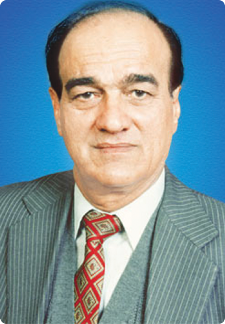
The owner of this magnanimous organisation was Mir Khalil-ur-Rahman, who is not with us now, but his work and sacrifices will forever be a part of the present and future. He was the father of Mir Shakil-ur-Rahman and Mir Javed Rahman, heirs to not only his empire but his reputation and hard work as well. Being brought up under such an eminent personality, both his sons have journalism in their blood. Having had an idea how Mir Sahib brought up his children, it would be interesting to know how his own childhood was like. Syed Mehmood Hasan, who used to interview people about their childhood, collected Mir Khalil-ur-Rahman's childhood memories in an interview he conducted with him in 1987, which was published on January 31, 1992, in Jang, after the demise of Mir Sahib. He asked Mir Sahib to share his childhood memories with him. Initially, humility made Mir Sahib hesitate in giving the interview, saying that he would not be comfortable "to praise myself in my own newspaper". However, due to the persistence of Syed Mehmood Hasan, he agreed to talk about his childhood. The following is an excerpt from that unique interview. Q: Where were you born? A: I was born in Gujranwala. Q: From where did you get your primary education and what was the name of your respectable father? A: My father's name was Mir Abdul Aziz. I got my primary education from Fatehpur High Scchool in Delhi. Actually, my family soon shifted from Gujranwala to Delhi that is why I studied in Delhi. Q: Have you got Islamic education as well? A: Yes, I got religious education from a Madressah and perhaps I was around eight years old when I completed my religious education. Q: Did you always want to become a famous journalist? A: Yes, I wanted to make my name as a famous and a big journalist since my childhood. To attain the highest position in any field one has to put all his/her efforts right from a young age. I began my career as a stenographer in 1939. It was a private organisation but I soon quit this job and I joined Dada Ishrat Ali Sahib's paper, who was a renowned journalist of the time. I learnt a lot about journalism from Dada Ishrat Sahib. I worked with him for some time, and then I started publishing Jang from Delhi in 1940. Q: Why did you name your newspaper "Jang"? A: Actually, there was the war on at that time, and war news used to be published in my paper as well. That was the reason my newspaper got popular with this name, Jang. Q: Who were your friends then? A: In the world of journalism some people were there who I would not call my friends, but, yes, I would call them my seniors or elders. They were Raees Amrohvi Sahib, Syed Muhammad Taqi Sahib, Janab Nasarullah Khan and Janab Sardar Ali Sabri Sahib. Q: Since you have such a busy life, and you had it right from the beginning, how much time do you give to your family? A: Jang is my home, Jang is my office, and I always give more time to my office, and I have given all my love to Jang Group which actually my family deserved. You can see it that today is Friday, and I am sitting with you. I usually arrive between 10am and 11am, sit in the office till 4pm and then I go home for a little time. Then again I come back to the office at 6pm. There are events every day so I sometimes go to those events and stay till late and still keep a check on Jang to learn about the news of the day and its authenticity. I have given all my blood and sweat to Jang, now I have so many diseases you cannot even imagine. I am proud that Allah has bestowed me with two intelligent sons for which I am grateful to Allah. Javed and Shakil have complete ability to work and I am sure that after me they will run Jang like I did. Q: What were the problems you had to face initially? A: I used to do all the work for the newspaper, some people were with me but I used to spend my whole day out in search for advertisements and news, and I used to get the news printed on my own and then sell the newspaper on the bicycle. Q: What problems did you face while launching Jang from Karachi? A: My time in Karachi was very crucial, but I never gave up. I kept on working hard and with the help of Syed Hashim Raza Sahib finally got an office and this way Jang kept on reaching the heights of success and fame. Initially in Karachi, from 1947 to 1948, I worked on the bicycle. I used to tie the newspaper at the back of the bicycle to visit different agents and stalls to sell the newspaper that is why somebody has said this for me: "Salam kyun na karain hum tumhari azmat ko Kay is watan main sahafat ki aabroo tum ho" Q: Any message for the children, Mir Sahib? A: The children should study with all their heart and get the religious education as well because Islamic education and remembrance of Allah brings success and my example is in front of you. I have got Islamic education and have always regularly offered prayers and kept fasts. Even today, I do not leave prayers and fasts. The children should work hard and whenever they start their career they should put all their efforts in it. Success is then ensured. |
Top |
Mir Khalil-ur-Rahman was the founder and editor of the Jang Group of Newspapers, a group that is now publishing one of the most popular Urdu and English language newspapers in Pakistan. He was the Shah Jahan who gave Pakistani journalism its Taj Mahal by making Jang an unbeatable newspaper in the country. A self-made newspaper magnate, he ranks among the most successful newspaper entrepreneurs inAsia Mir Khalil-ur-Rahman was born in 1927 to a middle-class family in Gujranwala, where he received his elementary and college education. He graduated in accountancy from the University of the Punjab. During the World War II, his parents moved to New Delhi, which was then the capital of the British Indian Empire. It was here that he discovered his love for journalism. The newspaper world attracted him far more than the dull books of accountancy. During the War years, he sat glued to his radio set to get the latest news. 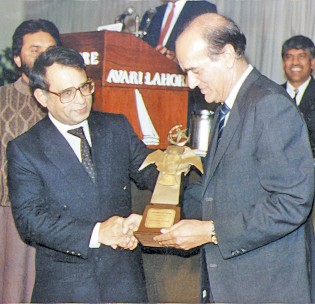
In 1940, when he was still a student, he started a newspaper in Delhi in pre-partition India for the Muslim soldiers fighting in the war. He called it Jang, an Urdu word which means "war" in English. This was not an exaggerated name as some believed, but a statement against the War. When the Muslim-majority State of Pakistan was created on August 14, 1947, Mir Khalil-ur-Rahman moved to Karachi and started publishing Daily Jang from there. Mir Khalil-ur-Rahman's legacy is the well-established Jang Group of Newspapers, whose papers are published from all major cities of Pakistan. His newspaper empire is managed by his two sons. He personally trained them in the science of newspaper management. As a result, besides expanding the Jang newspaper group, they have added to it a powerful Geo television channel which has progressed into one of the most popular television channels in Pakistan. Geo's transmission is also watched in the US, the UK and in many parts of the Islamic world. As a brave journalist who made history in the field of journalism, Mir Sahib gave a new vision to the field. He managed the Jang Group of Newspapers till his death in 1992. -By Maham Naz |
Top |
When journalism was taking its last breathes in representing the Muslims of the Subcontinent and needed a voice against the biased reporting; when Urdu newspapers were negligible than the pro-Congress Hindu newspapers; when the Pakistan Movement was in its full swing in the 1940s and needed a platform that would reflect its pure image, a young man appeared as a journalist with nothing but zeal and enthusiasm to contribute to this great cause---a cause for raising the voice of the oppressed Muslim population of the subcontinent. He had no capital and support but had pure vision and a heart filled with patriotism. The man who denounced despondency and became the true legend of journalism was the one who we all know today as the founder of modern Urdu journalism; the editor and publisher of the Jang Group, Mir Khalil-ur-Rahman. The journey from a young journalist with empty pockets to the heights of fame went through many ups and downs. The destiny introduced him as Mir Khalil-ur-Rahman when he launched his newspaper from Delhi in 1941, at the time when World War II was going on and in solidarity with the soldiers he named his newspaper "Jang" (War). Mir Sahib's product started becoming a renowned newspaper and oiled the rusted engines of journalism, leading to a positive change and opened the doors of liberalism. He guided the journalists towards optimism and taught them through his own practice that there is always two sides of a coin, likewise, there is always two sides of every story and knowing and analysing the right side of the story helps a journalist to set his aim to reach the truth, write the truth and tell the truth. To become a legend requires a life full of hardships, challenges and hurdles, and Mir Sahib's life was no less than a legend's. He had to deal with the challenges which were not similar to others. The biggest challenge for him was to devise an independent policy for his paper unlike other newspapers of the time that had biased policies. He always stood firm in his policies and never sold his words for the sake of somebody's favour or plea. After the Independence of Pakistan, Mir Sahib migrated from India to Pakistan and started his publication from Karachi with the same name, Daily Jang. He was a self-made man and made progress through sheer hard work and passion for his profession. The journey of making the Jang Group a modern and unbiased institution went through different stages. In the initial phase of the newspapers, he himself used to go to the paper market to buy the newsprint, do reporting and get the newspaper printed. He would himself go to the airport and collect packets of photographs and other news content delivered from the upcountry in order to include them in the morning newspaper issues. After the printing of the newspaper copies, Mir Sahib would deliver them to the hawkers for further door to door distribution. He never complained about undertaking these tasks himself or felt embarrassed in doing them alone. 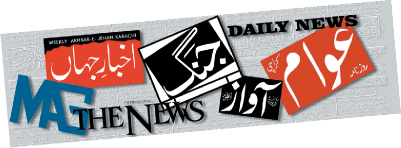
He was the most informed person in the whole office. After going through all the news, he used to discuss the stories which were to be printed and news to be done for the next day's publication. He kept himself abreast of the latest happening in and outside the country. He had a great command on international analysis and predictions. Mir Sahib always kept an eye on the latest technology. He imported the newest and best scanners, cameras, printing machines and other machineries from the United States, Britain, Germany and Japan. He also introduced colour printing. At the time, when newspapers were using hand calligraphy, which was a lengthy time consuming process, Mir Sahib introduced computer composing/calligraphy for the first time in Urdu journalism. Besides working for his organisation, he also made efforts to strengthen the journalist community. He knew that the words of a journalist were stronger than any weapon so he helped in founding the Council of Pakistan Newspaper Editors (CPNE) and opposed every government measure that aimed at curbing the freedom of the press in Pakistan under this platform. He was also elected as the President of the All Pakistan Newspapers Society (APNS), founded in 1956, and remained its President for nine years because people were very satisfied with his services to the body and his policies for the development and growth of the industry. Besides working for his organisation, he also made efforts to strengthen the journalist community. He knew that the words of a journalist were stronger than any weapon so he helped in founding the Council of Pakistan Newspaper Editors (CPNE) and opposed every government measure that aimed at curbing the freedom of the press in Pakistan under this platform. He was also elected as the President of the All Pakistan Newspapers Society (APNS), founded in 1956, and remained its President for nine years because people were very satisfied with his services to the body and his policies for the development and growth of the industry. The steady growth of the Daily Jang opened the avenues for more publications and in a little time, Mir Sahib started the publication of Daily News in 1962, which was an evening newspaper in English. The efforts of Mir Sahib and his staff took the Jang Group right to the top, and in 1966, the Jang Group introduced a weekly magazine in colour, Akhbar-e-Jahan. One after another success of the magazines and trust of the nation on the newspapers motivated Mir Sahib and in the early 1970s, he decided to launch his newspaper in London too. Jang reached Quetta and Lahore with a different edition in the early 1980s. This does not end here, and the Jang Group launched a weekly English magazine, MAG. And in 1991, the group launched an English daily, The News International, published simultaneously from the country's main cities, Karachi, Lahore and Islamabad/Rawalpindi, and distributed across the country. 
The steady growth of the Daily Jang opened the avenues for more publications and in a little time, Mir Sahib started the publication of Daily News in 1962, which was an evening newspaper in English. The efforts of Mir Sahib and his staff took the Jang Group right to the top, and in 1966, the Jang Group introduced a weekly magazine in colour, Akhbar-e-Jahan. One after another success of the magazines and trust of the nation on the newspapers motivated Mir Sahib and in the early 1970s, he decided to launch his newspaper in London too. Jang reached Quetta and Lahore with a different edition in the early 1980s. This does not end here, and the Jang Group launched a weekly English magazine, MAG. And in 1991, the group launched an English daily, The News International, published simultaneously from the country's main cities, Karachi, Lahore and Islamabad/Rawalpindi, and distributed across the country. Mir Sahib had always been on a hunt for talented and competent editors, correspondents, printers, advertising and managerial people. He created a very talented team comprising well educated and learned people. He always encouraged young journalists towards learning new things and guided them from his personal experiences. Besides his staff, he also trained his two able sons, Mir Shakil-ur-Rahman and Mir Javed Rahman, to run and expand the Jang Group with him and after him. His two sons realised the dream of their father with hard work, passion and with the same zeal which they inherited from their father. He was a guardian, a teacher and a leader whose doors were always open for the staff, from a senior staff member to the peon; nobody had to talk to his secretary or his PA before meeting him. The people working around him always knew where they would find him. Journalism was so much into his blood that he was always found listening to the news in the office or always monitoring and suggesting stories to the editors and other members of the editorial and news staff. All these strategies and efforts have made Jang a big name and assured excellence in journalism. The journey of the group continued breaking new grounds. Besides, the addition of new magazines and newspapers, the most popular news and entertainment channels under Geo network were launched. It was the same dedication that when a ban was put on Geo, the group stood firm in times of the worst difficulties while upholding the norms of the truth. The journey of the group continued breaking new grounds. Besides, the addition of new magazines and newspapers, the most popular news and entertainment channels under Geo network were launched. It was the same dedication that when a ban was put on Geo, the group stood firm in times of the worst difficulties while upholding the norms of the truth. As a publisher and founder, his life was at the height of success, but people rarely know about him as a writer. In his whole career he barely got a chance to write but whenever he wrote he proved himself a fantastic and an analytical writer. He was a multitasking person and no one can deny the fact that Mir Sahib had a purely positive personality and was a great man ever born in the history of journalism who is called the "Mir" of modern Urdu journalism. The success he achieved in his endeavours with his endless efforts and passion did not bring a minor change in his personality. He lived like a legend and died like a legend. He earned endless love and respect of the nation. Mir Sahib departed from this world on January 25, 1992, but journalism did not become an orphan because the seed he sowed decades ago, which he watered with his sweat, grew with time and has now turned into a big shady tree whose branches are spread across the country and under whose shade the nation finds peace and solace -- which was the motto of Mir Khalilur-Rahman. |
Top |
"Mir Khalil-ur-Rahman (MKR) was not only a great journalist but also a patron of journalism and journalists who encouraged his juniors in a manner that they never felt themselves as inferior and isolated," said famous journalist, writer and a human rights activist, Mehnaz Rehman. She said he had a quality to identify others' qualities and guide them and encourage them to apply their talents in their professional lives. Mehnaz Rehman said that she had worked for Jang and Akhbar-e-Jehan for eight years as a special correspondent while staying in Beijing with her husband, Ahfazur Rahman, from where she used to write for Daily Jang and Akhbar-e-Jehan. She said her column, titled "Maktoob-eCheen", was highly appreciated by the people. During those days, she recalled, Mir Sahib kept encouraging her, guiding her and even patronising her by writing a letter to the concerned diplomats at Beijing to cooperate and assist her (Mehnaz Rehman) in performing her duties. Mehnaz Rehman further said that once while was on a visit to Pakistan, she was specially invited by Mir Sahib along with her parents to have a dinner with him. Describing the details of the dinner, she said Mir Sahib sent his car for bringing her and her parents to his residence at the Defence Housing Authority (DHA) where Mir Sahib and his wife received her. She said that Mir Sahib and Begum Sahiba (his wife) were kind enough in encouraging her and appreciating her writings. She said that Mir Sahib had also asked her to tell him about the money as remuneration/payment but she politely refused, adding that she wrote on an honourary basis. She pointed out that she received the "Tamgha-e-Dosti" by the then premier of the People's Republic of China, Li Peng, and that was the first time a journalist from Pakistan was conferred with such a prestigious award in that country She underlined that her journalist husband Ahfazur Rahman was the founding team member that published the first issue of Akhbar-e-Jehan. She said Ahfazur Rahman worked for a long time for the Jang Group and Mir Sahib. Syed Zafar Ali, a senior staff member of the Jang and in charge of fax operators, said that he was a lucky employee who was appointed by Mir Sahib some 30 years back. He said MKR was a great man and treated his staff like a father. He said the late MKR was a man of wonderful qualities and was an expert in treating his staff wisely. Syed Zafar Ali further stated that he wondered whether Mir Sahib was an expert in dealing with the human psychology as he selected him (Zafar) and others for the exact job he assigned them and that was really a blessing Syed Zafar Ali said that it was he who informed the editorial department about the sad demise of Mir Sahib after he had received the information through fax from London in 1992 that "Mir Sahib was no more among us." He said that when Mir Sahib was leaving for London for medical treatment he met with him (Zafar Ali) and other staff and told them about his departure. Zafar Ali said that he (Mir Sahib) had asked him to pray for his recovery Syed Zafar Ali said that Mir Sahib was a great human being who never left his employees alone in difficulties and instead helped them and assisted them in their difficulties in economic terms. 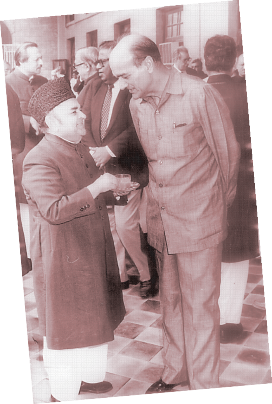
Central President of the Mazdoor Kisan Party, S M Altaf, said that he had been visiting the Jang Group offices since the days when its offices were at Burns Road. He said that Mir Sahib was a kind-hearted man and treated visitors to the Jang Group offices kindly. Altaf said that he was a student leader and used to visit Jang office for publication of press releases covering students' activities. Most of the press releases were published, but when they were not published, he (Altaf) directly visited Mir Sahib, who always heard the complaints of the student leader and published his press releases. S. M. Fazal, editor of the Daily News, a popular English eveninger printed from Karachi, while sharing his memories about Mir Khalil-ur-Rahman, who he worked with for a long time, said: "Although he was Pakistan's most successful publisher and owner of the country's biggest newspaper chain, yet MKR prided himself basically as a journalist. His name appeared in his newspaper as Editor-in-Chief. Not only that, he actually worked as a journalist." He further said that Mir Sahib would usually be seen with his pen and notebook at important press conferences and briefings, sitting with other fellow journalists and assiduously taking down notes. "He used to be the lone proprietor of a big newspaper group among a crowd of reporters and news editors at such briefings. And sure enough one would find a news story based on that briefing in next day's Jang. Many a time such briefings would be only for background information and did not necessarily give matter for a news story, even then Mir Sahib would attend them. At one such briefing in Karachi, while all the other journalists, including myself, sat listening to the background information that the official gave, Mir Sahib was busy jotting down notes. At the end of the briefing, he suggested to me that some of the information could make a news story, and sure enough there was a front page story in the Jang the next day. Thus it can be said that Mir Sahib had a great nose for news," S M Fazal concluded. 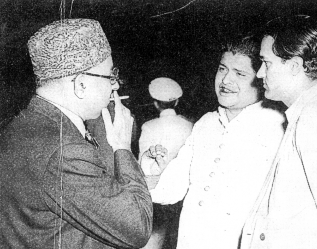
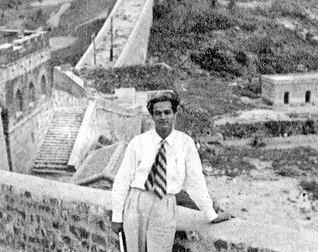
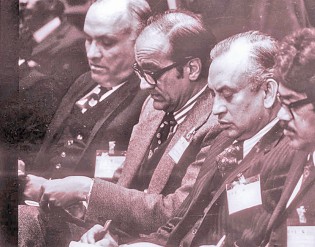
|
Top |